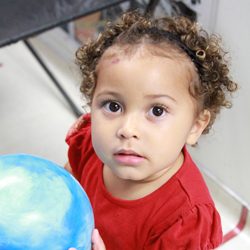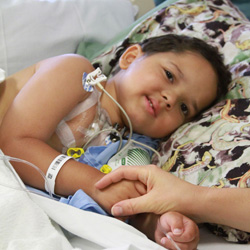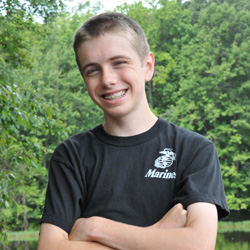Brain Cancer in Children Overview
Childhood brain tumors, which are a form of Central Nervous System (CNS) tumors, account for nearly 25% of all pediatric cancers. The five-year survival rate for children with brain and spinal cord tumors is about 75%, though factors like type of tumor, location, and age at diagnosis play a large role in childhood cancer survival rates. For example, while children with certain low-grade tumors may have excellent long-term survival, those with aggressive tumors such as diffuse intrinsic pontine glioma (DIPG), face survival rates below 2%. Advances in surgical techniques, more precise forms of radiation, and refinements in chemotherapy have contributed significantly to improvements in survival rates, though these have been more limited for high-risk tumors.
Signs and Symptoms of Central Nervous System Tumors
Typical symptoms of Central Nervous System (CNS) tumors are directly related to the location of the tumor, how fast it is growing, and any associated tissue swelling that occurs in conjunction with the tumor. Parents often are the first to notice symptoms related to the development of a CNS tumor. Occasionally, the child’s teacher or physician may note signs and symptoms that are worrisome.
Typical symptoms of CNS tumors include:
- Headaches (frequent, recurrent), especially after waking up in the morning
- Vomiting, especially in the morning
- Eye movement problems and/or vision changes
- Unsteady gait or worsening balance
- Weakness of one side of the face
- Loss of previously acquired developmental milestones
- Weakness in the arms or legs
- Bulging fontanel (soft spot on an infant's head where the bones that make up the skull have not fully joined) or increased head size in infants
- Tilting of the head or neck to one side
- Seizures
- Difficulty with speech, swallowing or drooling
- Back or neck pain, often waking the child at night
Less common symptoms include:
- Changes in eating or thirst
- Growth problems
- Dizziness
- Lethargy, irritability or other behavior changes
- Deterioration in school performance
- Loss of sensation in the arms or legs
- Loss of consciousness, without history of injury
- Changes in, or loss of control of, bowel or bladder
- Hearing loss, without evidence of infection
ABOUT CENTRAL NERVOUS SYSTEM TUMORS

Central Nervous System tumors in children occur in the brain and spinal cord. Together, these important organs control functions necessary to sustain life, such as breathing, heart rate, movement, thinking and learning. Important substances produced in the brain stimulate and control many other organs in the body. When pediatric CNS tumors develop, they have many unique properties and symptoms.
In general, CNS tumors tend not to "metastasize" or spread to distant areas of the body outside of the brain or spinal cord. They can recur locally, and they can spread to other areas of the central nervous system.
There are several different types of CNS tumors. Collectively, they comprise 25% of childhood cancer diagnoses.
Common types of CNS tumors include:
Medulloblastoma
Medulloblastoma is the most common malignant brain tumor in children. It is a fast-growing tumor that begins in the lower back part of the brain (the posterior fossa) and can spread to other parts of the body. In up to one-third of patients, the tumor will have spread to the brain lining (meninges) and spinal cord at the time of diagnosis. These children often have vomiting, headache and balance problems at diagnosis and may need shunts placed to relieve obstruction of spinal fluid.
PNET (Primitive Neuroectodermal Tumor) and Pineoblastomas
These tumors typically are located in the upper part of the brain. Due to the location of the tumor, the patient's initial problems may include the onset of seizures or eye abnormalities, as well as problems with headache, nausea and vomiting. PNETs and pineoblastomas have a similar pathology to medulloblastomas and are treated similarly.
Gliomas (sometimes referred to as Astrocytoma)
Gliomas are brain tumors that begin in the glial cells, which are cells that surround and support the proper functioning of nerve cells. Astrocytomas are brain tumors that form in astrocyte cells, which are a specific type of glial cell. About half of brain tumors in children are astrocytomas. As most gliomas originate from astrocytes, the terms are often used interchangeably.
Gliomas are classified as either low-grade or high-grade based on how likely they are to grow and spread. Low-grade gliomas usually are slow-growing and stay in a local area of the brain. High-grade gliomas grow quickly and spread easily throughout the brain.
High-grade gliomas are the most common lethal tumors in adults, but also occur in children. Due to the location of the tumor, these patients may have seizures and significant paralysis at the time of diagnosis. Because high-grade gliomas are much more aggressive, they require more intensive treatments.
Diffuse Intrinsic Pontine Glioma (DIPG)
These high-grade gliomas grow amidst the nerves coming down the upper spine. Children with DIPG may be diagnosed with eye movement problems, imbalance, paralysis and swallowing difficulties. Because it cannot be removed surgically and grows aggressively, DIPG is an extremely difficult tumor to cure.
Ependymoma
Ependymoma (grade II), and the more malignant ependymoblastoma (grade III), tend to occur in children under 6 years old. These tumors usually are located in the lower back part of the brain (posterior fossa), but may also arise higher in the brain or in the spinal cord. As with medulloblastoma, children with posterior fossa tumors tend to be diagnosed because of vomiting, headache and/or balance problems.
Germ Cell Tumors
Germ cell tumors occur most commonly in the pituitary or pineal glands just behind the eyes. In this location, it is usually possible to biopsy the tumor but not remove it. Germ cell tumors arise from the same kind of cells that exist in the ovaries and testes. There are several types of germ cell tumors, including pure germinomas and non-germinomatous germ cell tumors like yolk sac tumors, embyonal cell carcinomas, choriocarcinoma, mixed tumors, and malignant teratomas. Germ cell tumors are more common in adolescents than in younger children.
Spinal Cord Tumors
There are several types of spinal cord tumors including ependymomas, and low- and high-grade astrocytomas. Treatment often includes removing as much of the tumor as possible without further damaging the spinal nerves. For low-grade tumors, some children also receive outpatient chemotherapy similar to that used for low-grade astrocytomas. For high-grade spinal cord tumors, children are generally also treated with chemotherapy and radiation to the tumor.
Other Rare Brain Tumors
Choroid Plexus Tumors, including papillomas and carcinomas, usually occur in infants and are treated primarily with surgical resection and occasionally chemotherapy. Craniopharyngiomas are treated by surgical resection and radiation therapy based on the location of the tumor and the involvement of the surrounding tissues. Sarcomas of various types that usually arise from soft tissues in the body, including muscle, sometimes occur in the brain. These sarcomas are treated with maximal surgery, local radiation and chemotherapy appropriate for body sarcomas.
CureSearch Research
We're driving high-potential research to make a difference. Learn more about active CureSearch research projects addressing brain tumor types.
Read: This Pediatric Glioma has no known cure. Dr. Breunig is taking on the challenge.
Join our mailing list
Stay up to date on the latest news, research breakthroughs and stories of hope.



